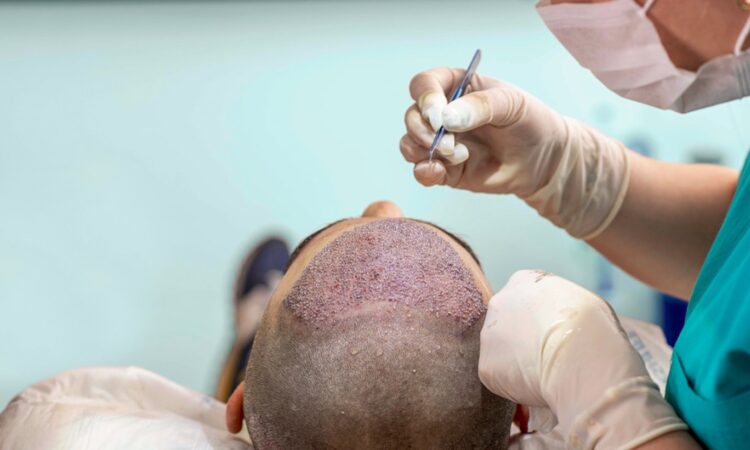
It is indicated to correct male or female androgenetic alopecia. Hair transplantation by hair transplantation is a very sophisticated technique with minimal risks. It makes it possible to repopulate the bald areas of the scalp linked to alopecia by removing and implanting the follicular units, one by one, without incision and without scars.
This technique is recommended for small baldness or extensive baldness with the consent of the patient to undergo more than two sessions, for patients wishing to wear very short hair and patients with little flexibility of the scalp (limiting factor for the sample per strip).
Hair Transplant
FUE hair transplant: The importance of the 1st consultation:
Hair surgery interventions are always preceded by an assessment consultation and advice. This consultation allows you to take stock of hair loss and the importance of baldness and to take medical photographs before the transplant session (it goes without saying that photographs will be taken after the transplant). Before the hair transplant, it is recommended to stop smoking, not to consume aspirin or anti-inflammatory drugs and these ten days before. You should also avoid taking stimulants (alcohol, tea or coffee) the day before and the morning of the procedure. Antiseptic shampoo should be done in the morning before the procedure. This takes place under local anesthesia and, depending on the amount of hair transplanted, lasts three to six hours. For understanding the options you can have, you can click here.
Procedure of the FUE transplant: procedure
Beforehand, the pencil marking makes it possible to delimit the bald area to be treated and the hairy area to be removed. Using precision micro-drills with a diameter of less than 1 mm (0.7 to 0.9 mm), the hair follicles are removed. The doctor can directly take follicular units, a group of hair, from one to three hairs at most. It should be noted that it is possible to collect 1,000 follicular units in 4 hours, corresponding to 2,000 to 3,000 hairs. Hair implants are checked for quality, then stored in ice-cold serum before being re-implanted. The grafts are then removed using forceps. An implanter pen, in which the doctor will have taken care to place the grafts, allows them to be placed directly in the scalp of the area to be covered.This pen allows to implant 130 hairs per square centimeter in a natural and very dense way. With this technique, there is no visible shaving and it is possible to implant 700 grafts per day.
Postoperative process
No dressing is necessary and a consultation for verification with the doctor takes place the day after the operation. Edema in the transplanted region may appear within 24 to 48 hours after the operation. This quickly migrates to the forehead and eyelids, giving them a swollen appearance, then it disappears after 3 to 4 days of scabs and redness only last five days. The shampoo will not be used until four days after the transplant. Three to seven days are necessary for the patient to resume activities and three weeks must pass before resuming any physical activity. The scars are so thin that they are undetectable to the naked eye as long as the hair is 5 to 7 mm in length.
Postoperative follow-up
During the stay:
The dressing is replaced by a garment type “compression sleeves” which must be worn by the patient for a few weeks.
The surgeon checks that the edemas are resolved correctly and that there is no bleeding from the scar.
After the return:
Your surgeon will follow up the patient beyond the period of hospitalization. He will be at his disposal even remotely for any questions he may ask.
The result of FUE hair transplant
Hair grows back from three months and one year is needed for the final result. The patient then regains normal hair, without any trace of medical intervention. Hair growth is then 1 cm per month.

